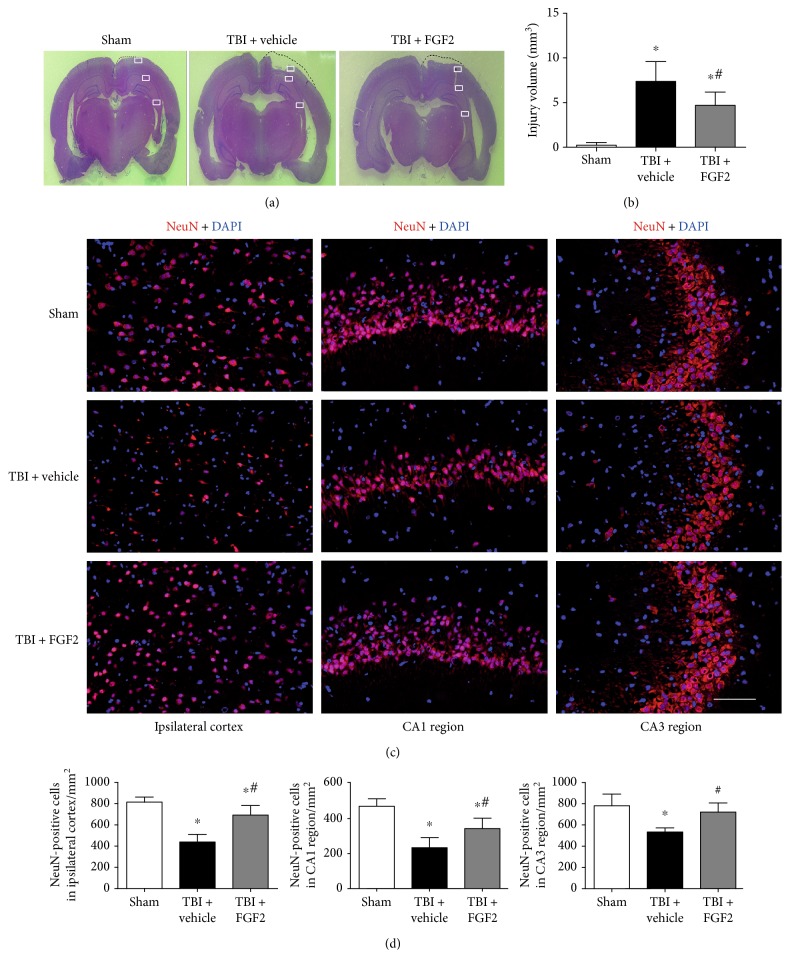Figure 2.
FGF2 prevents the loss of the brain tissue and promotes neuronal survival after TBI. (a) Representative images of HE-stained coronal sections 48 h post-TBI. The white squares indicated the region of the images presented in Figure 2(c). (b) Quantitative analysis of cerebral lesion volume revealed a significant decrease in loss of tissue following treatment with FGF2. The bars represent the mean ± SD. n = 6. ∗P < 0.05 versus sham and #P < 0.05 versus TBI + vehicle. (c) Representative images of the ipsilateral cortex (left) and CA1 and CA3 regions of the ipsilateral hippocampus (middle and right) on NeuN-stained coronal sections from each group 48 h post-TBI. Scale bar = 100 μm. (d) Quantitative analysis revealed significant increases in the numbers of NeuN-positive cells in the ipsilateral cortex (left) and CA1 and CA3 regions of the ipsilaterial hippocampus (middle and right) 48 h post-TBI following pretreatment with FGF2. The bars represent the mean ± SD. n = 6. ∗P < 0.05 versus sham and #P < 0.05 versus TBI + FGF2.

